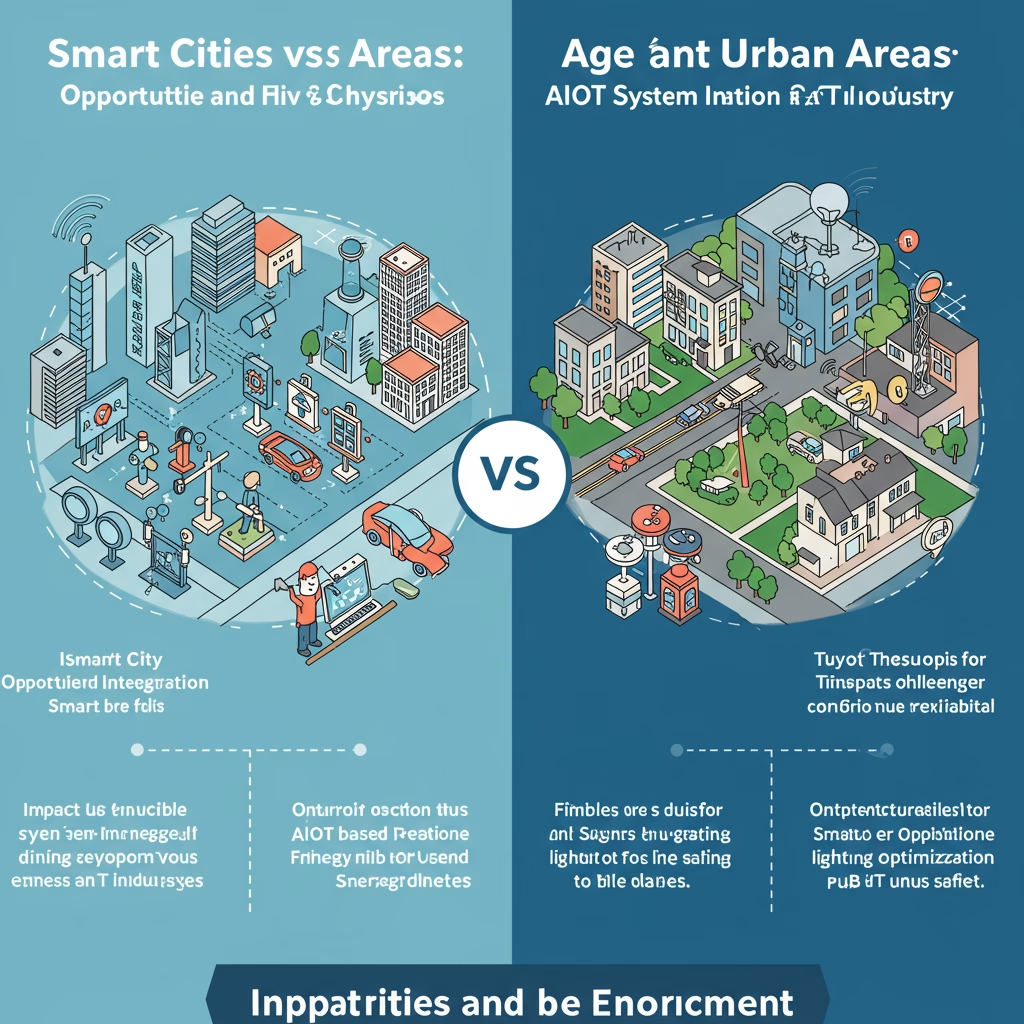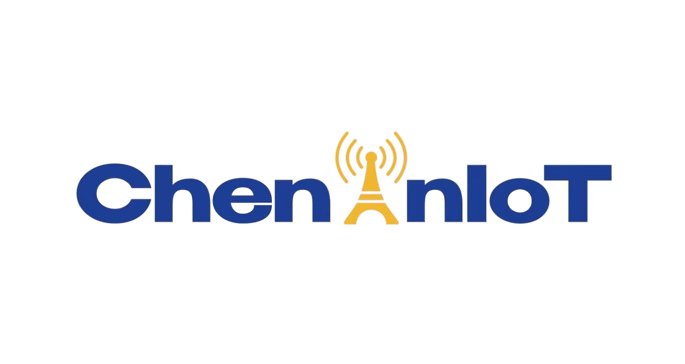Smart Cities vs Aging Urban Areas:
Opportunities and Challenges for AIoT System Integration and the IoT Industry
The European Union’s (EU) strategic drive towards smart city development is reshaping urban landscapes, presenting significant opportunities and challenges for AIoT (Artificial Intelligence of Things) system integration and the broader Internet of Things (IoT) industry. This article will explore the motivations behind the EU’s push for smart city construction and delve into the implications for related industries.
The EU’s Smart City Vision: Addressing the Challenges of Aging Urban Areas
The EU’s commitment to smart city construction stems from the core objective of addressing the complex issues faced by aging urban areas, including aging infrastructure, environmental pollution, and the growing demands of modern urban populations. Smart cities are seen as technology-driven ecosystems aimed at improving urban efficiency, sustainability, and residents’ quality of life.
AIoT: The Cornerstone of Smart Cities
AIoT, the fusion of artificial intelligence and the Internet of Things, is crucial for realizing the smart city vision. AIoT systems can collect, analyze, and process vast amounts of data generated by connected devices, enabling cities to achieve the following goals:
-
Optimize Resource Management:
Achieve efficient resource allocation through AI-driven systems that analyze energy consumption, water resource utilization, and waste generation patterns.
-
Enhance Urban Transportation Efficiency:
Alleviate traffic congestion and improve transportation efficiency by utilizing AI-driven traffic management systems, autonomous vehicles, and smart parking solutions.
-
Strengthen Public Safety: Enhance urban public safety and security by leveraging AI-driven video analytics, sensor networks, and predictive policing.
-
Deliver Personalized Services: Provide personalized services to citizens, such as real-time information, customized recommendations, and proactive support, through AI-enabled platforms.
Investment and Growth Trends for the Next 5 Years: The Golden Age of the AIoT Industry
The development of smart cities is not only a strategic priority for the EU but also a significant growth point for the global technology industry. Market research reports predict a significant growth trend in global investment in smart city technologies and solutions over the next 5 years.
-
Investment Scale:
- The global smart city market size is projected to reach hundreds of billions of dollars by 2028.
- The EU will allocate tens of billions of euros to smart city projects through the “Digital Europe Program” and other related funds.
- Private sector investment, particularly in key technology areas such as AIoT, 5G, and cloud computing, will also increase significantly.
-
Compound Annual Growth Rate (CAGR):
- The AIoT market is expected to have a CAGR exceeding 20%.
- Areas such as smart transportation, smart energy, and smart public safety may have even higher growth rates.
- Related services such as software platforms, data analytics, and cybersecurity will also maintain strong growth.
The driving factors behind this growth trend include:
-
Technological Advancement:
The widespread adoption of 5G networks, advances in artificial intelligence and machine learning, and the rapid development of cloud and edge computing.
-
Policy Support:
The EU and national governments are actively developing policies and regulations to support smart city construction.
-
Social Demand:
Growing urban populations and aging demographics, as well as the increasing demand for safe, convenient, and environmentally friendly urban living.
Impact on AIoT System Integration and the IoT Industry: Opportunities and Challenges Coexist
The investment and growth trends of the next 5 years will have a profound impact on the AIoT system integration and IoT industry:
-
Market Expansion:
Smart city projects will create a large number of new market opportunities.
-
Technological Innovation:
Companies need to continuously innovate and develop new technologies to meet the needs of smart cities.
-
Industry Convergence: Smart city projects require cross-industry collaboration, promoting industry convergence and the emergence of new business models.
-
Talent Demand: The development of smart cities will create a large number of new job opportunities, particularly in areas such as data science, artificial intelligence, and cybersecurity.
Opportunities for the AIoT System Integration and IoT Industry: Seizing the Wave of Smart City Construction
The growth of smart cities creates abundant opportunities for AIoT system integrators and the IoT industry:
-
Surging Demand for AIoT Solutions: The demand for sophisticated AIoT solutions is rapidly increasing as cities actively advance smart city initiatives.
-
Emerging Business Models:
Smart cities open up new business models for IoT enterprises, such as data-driven services, platform-as-a-service (PaaS), and outcome-oriented solutions.
-
Collaboration and Partnerships:
Smart city projects require collaboration among technology suppliers, government agencies, and urban planners, fostering new partnerships and alliances.
-
Innovation and Development:
The complexity of smart city projects drives innovation in AIoT technologies, promoting the development of new sensors, algorithms, and platforms.
-
Sustainable and Ethical Growth:
The EU emphasizes sustainable and ethical AIoT development, creating opportunities for enterprises that prioritize responsible innovation.
Challenges Facing the AIoT System Integration and IoT Industry: Addressing the Complexity of Smart City Construction
Despite the immense potential, the AIoT system integration and IoT industry also face numerous challenges in smart city construction:
-
Interoperability and Standardization:
Ensuring interoperability between diverse IoT devices and platforms is crucial for the seamless operation of smart cities.
-
Data Security and Privacy:
Smart cities generate vast amounts of data, raising concerns about data security and privacy, making robust security measures and data protection frameworks essential.
-
Scalability and Reliability:
AIoT systems must be scalable and reliable to meet the demands of large-scale urban deployments.
-
Legacy Infrastructure Integration:
Integrating AIoT solutions with existing legacy infrastructure can be complex and costly.
-
Governance and Regulation:
Clear governance frameworks and regulations are needed to guide the development and deployment of AIoT solutions in smart cities.
-
Ethical Considerations:
The use of AI in smart cities raises ethical issues such as bias, fairness, and transparency.
Navigating the Future of Smart Cities: Strategic Directions for the AIoT Industry
To seize opportunities and overcome challenges, AIoT system integrators and IoT enterprises must:
-
Focus on Interoperability:
Develop solutions that comply with open standards and promote interoperability.
-
Prioritize Security and Privacy:
Implement robust security measures and data protection frameworks.
-
Invest in Scalability and Reliability:
Design systems capable of meeting the demands of large-scale urban deployments.
-
Embrace Collaboration:
Establish partnerships with other stakeholders to develop comprehensive smart city solutions.
-
Adhere to Ethical Principles:
Develop and deploy AIoT solutions responsibly and ethically.
-
Stay Informed About Regulations:
Stay abreast of evolving regulations and governance frameworks.
The EU’s Role: Accelerating Smart City Construction
The EU plays a crucial role in promoting the development of smart cities:
-
Providing Funding and Support:
Provide funding and support for smart city projects through various programs.
-
Setting Standards and Regulations:
Establish standards and regulations to ensure the safety, security, and interoperability of IoT devices and systems.
-
Promoting Collaboration:
Facilitate collaboration among stakeholders through initiatives such as the European Innovation Partnership on Smart Cities and Communities.
-
Supporting Research and Innovation:
Fund research and innovation in AIoT and related technologies.
Conclusion: The AIoT Industry Has a Promising Future in Smart City Construction
The EU’s push for smart city construction presents transformative opportunities for the AIoT system integration and IoT industry. By addressing challenges and seizing opportunities, these industries will play a vital role in creating more sustainable, efficient, and livable urban environments for European citizens.
Share this:
- Click to share on Facebook (Opens in new window) Facebook
- Click to share on X (Opens in new window) X
- Click to share on WhatsApp (Opens in new window) WhatsApp
- Click to email a link to a friend (Opens in new window) Email
- Click to share on Reddit (Opens in new window) Reddit
- Click to share on LinkedIn (Opens in new window) LinkedIn
- Click to share on Pinterest (Opens in new window) Pinterest
- Click to share on Telegram (Opens in new window) Telegram
Related
Discover more from ChenAnIoT
Subscribe to get the latest posts sent to your email.




